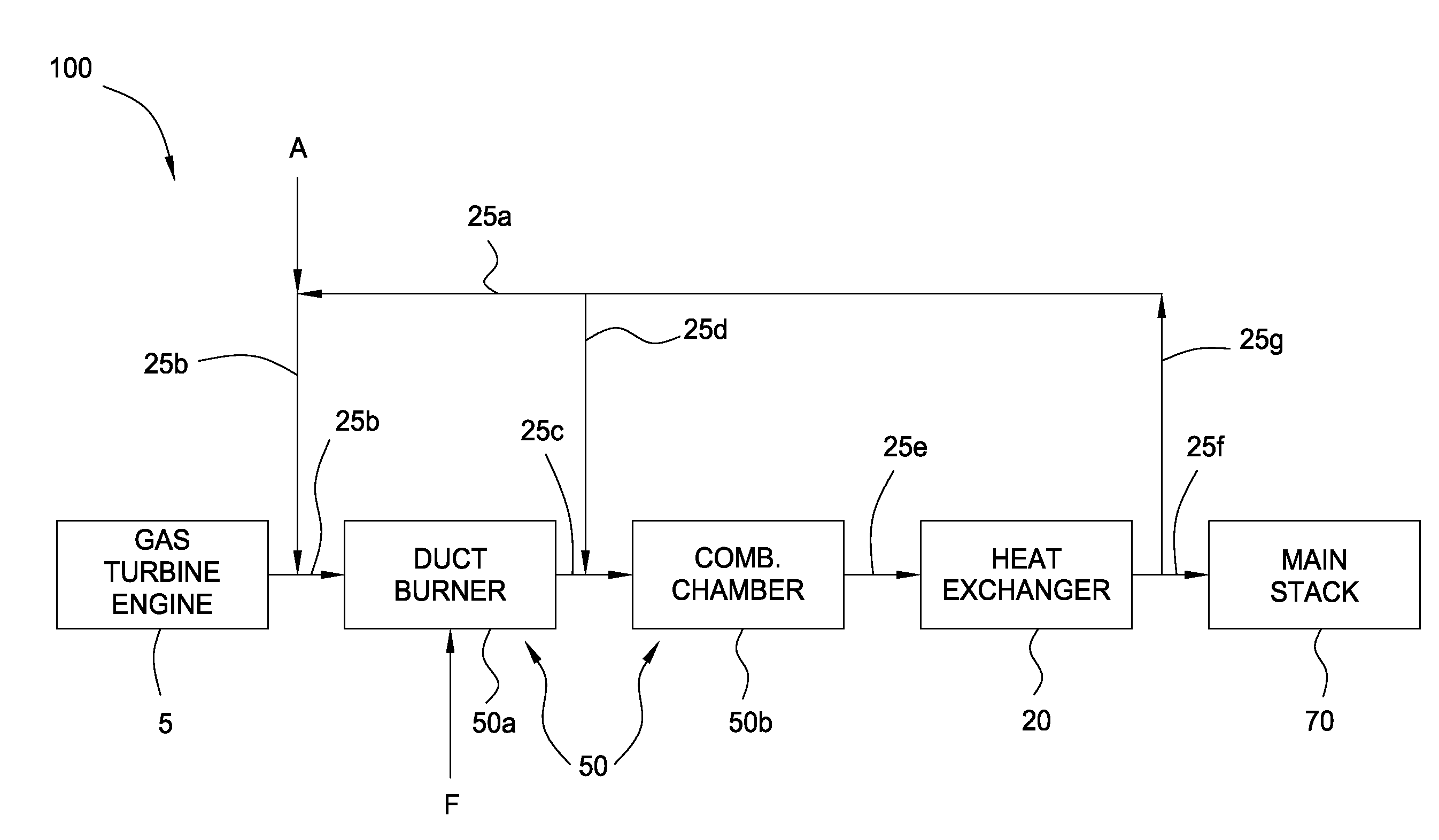Practical method for improving the efficiency of cogeneration system
a cogeneration system and efficiency improvement technology, applied in mechanical equipment, machines/engines, lighting and heating apparatus, etc., can solve the problems of increasing the recirculation rate of exhaust gas, reducing the oxygen concentration at the inlet of the furnace, and reducing the heat energy lost through the stack, so as to achieve the effect of increasing the recirculation rate and generating heat energy
- Summary
- Abstract
- Description
- Claims
- Application Information
AI Technical Summary
Benefits of technology
Problems solved by technology
Method used
Image
Examples
examples
[0025] Table 1 exhibits the beneficial effect of diverting a portion of the recycled exhaust gas and injecting the diverted recycled gas (DRE) gas 25d downstream of the burner 50b. The DRE entries marked by an “X” were simulated with the cogeneration system 100 operating in fresh air mode, whereas, the entries not marked were simulated for a conventional recycled gas cogeneration system operating in fresh air mode. The recirculation rate column for the DRE entries reflect an overall rate measured at the deflection damper 245. In each of the DRE entries, the diverter controller 275c was set to maintain acceptable oxygen content to the duct burner 50a (measured in the recirculation sub-duct 210) for stable combustion of between about 18% and about 18.5%, thereby improving the global efficiency of the cogeneration system 100. Alternatively, but less preferably, the diverter controller may be set to maintain the oxygen content at about 17.5% and, least preferably, at about 17%, accordin...
PUM
 Login to View More
Login to View More Abstract
Description
Claims
Application Information
 Login to View More
Login to View More - R&D
- Intellectual Property
- Life Sciences
- Materials
- Tech Scout
- Unparalleled Data Quality
- Higher Quality Content
- 60% Fewer Hallucinations
Browse by: Latest US Patents, China's latest patents, Technical Efficacy Thesaurus, Application Domain, Technology Topic, Popular Technical Reports.
© 2025 PatSnap. All rights reserved.Legal|Privacy policy|Modern Slavery Act Transparency Statement|Sitemap|About US| Contact US: help@patsnap.com



